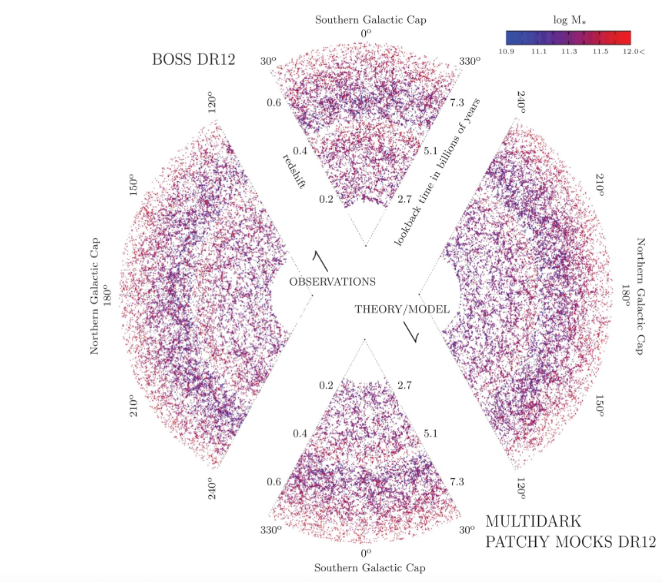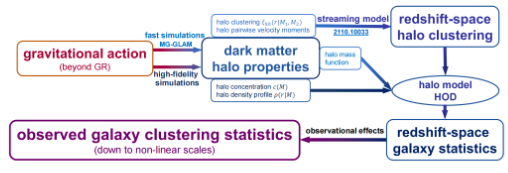– My name is Cheng-Zong Ruan, but I encourage people call me by my last name (“run”). I am from China.
Ruan got is Bachelor and Master degrees at Beijing Normal University, China, from 2013 to 2019.
– I have been studying and working on modelling the large scale structure of our Universe. When I was a master student, I used analytical methods to predict observational quantities, with an accuracy of 20%, tells Ruan.
From 2019 to 2022, he did his doctoral fellowship at the Institute for Computational Cosmology, Durham University, UK.
– During my PhD, I combined numerical simulations and machine learning techniques to make predictions. The model accuracy was improved to 1%, he says proudly.
Ruan joined the Institute of Theoretical Astrophysics (ITA) in September 2022 as postdoctoral fellow of the Cosmology and Extragalactic Astronomy research group:
– The first postdoc offer I received was from ITA, confesses Ruan.
Simulations vs. real observations
From a galaxy survey, one can see that galaxies are not evenly distributed on the sky. Such clustering of galaxies is caused by gravity. Therefore, measurements of galaxy clustering can be used to look for any deviation from the current standard gravity theory -- general relativity.

– What are you going to study?
– As a postdoc at ITA, I am trying to make my model more completed by incorporating the effects of real observations. Hopefully, I can confront my model predictions with the upcoming high-quality observational data from ESA’s Euclid satellite, explains Ruan.
– How will you accomplish that?
– I develop working pipelines for predicting the galaxy clustering signals in modified gravity (MG) models. We can constrain the strength of MG by confronting model predictions with observational data, says Ruan.
– I use simulation-based theoretical templates as model ingredients to predict cosmological observables, he adds.
– What fascinates you about your research?
– I love the framework of the method we proposed, as shown in the flow chart below. We decompose a big problem (modelling the non-linear galaxy clustering in non-standard gravity theories) into several small problems that are much easier to solve.

– What are the challenges in your research?
– The biggest challenge: the uncertainties in the physics of galaxy formation. We have robust predictions for the formation of dark matter haloes for both the standard and non-standard gravity theories. But we must adopt a galaxy-halo connection prescription since galaxies are what we observe. That involves additional model parameters and, therefore, the constraints on gravity theory is weaken.
Attractive research on cosmology at ITA
– What brought you to Oslo?
– I did not know anything about Oslo and Norway before, but during my PhD I had read many papers on cosmology written by researchers at ITA, tells Ruan.
– What is your experience at ITA so far?
– Everything goes smoothly (except for opening a local bank account), I was able to fully focus on my research only a few days after arrival. Everyone is friendly, he adds.
– Any expectations from this experience?
– I hope to reveal or exclude some modified gravity theories on cosmic scales, using the upcoming data from the Euclid satellite (will launch in 2023), he concludes excited.
